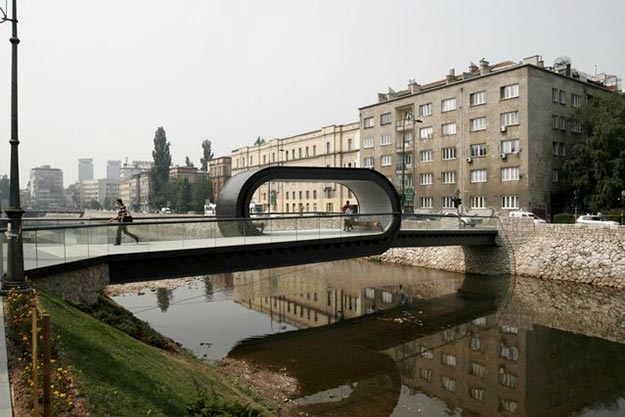 Festina lente (Latin for “make haste slowly”) is a pedestrian bridge over the Miljacka River in Sarajevo. The bridge is 38 meters long and features an unusual looping in the middle, suggesting slowing down and enjoying the view. Read more
Festina lente (Latin for “make haste slowly”) is a pedestrian bridge over the Miljacka River in Sarajevo. The bridge is 38 meters long and features an unusual looping in the middle, suggesting slowing down and enjoying the view. Read more
Archive for Article
The Festina Lente Bridge
The Sea Otter
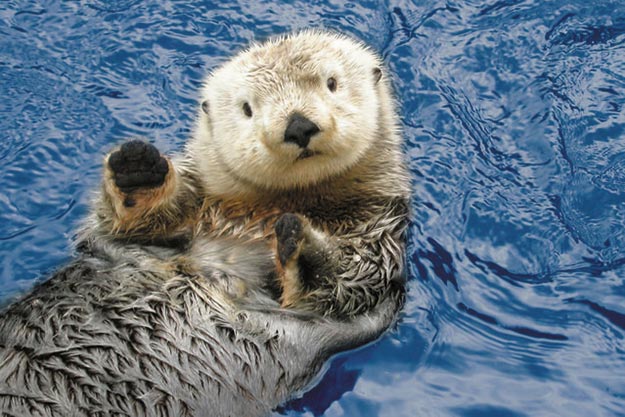 The sea otter (Enhydra lutris) is a marine mammal native to the coasts of the northern and eastern North Pacific Ocean. Adult sea otters typically weigh between 14 and 45 kg (31 and 99 lb), making them the heaviest members of the weasel family, but among the smallest marine mammals. Read more
The sea otter (Enhydra lutris) is a marine mammal native to the coasts of the northern and eastern North Pacific Ocean. Adult sea otters typically weigh between 14 and 45 kg (31 and 99 lb), making them the heaviest members of the weasel family, but among the smallest marine mammals. Read more
Lost City Shicheng found Underwater in China
Qiandao Lake, a man-made lake located in Chun’an County, Zhejiang, China, formed after the completion of the Xin’an River hydroelectric station in 1959. 1,078 large islands dot the lake and a few thousand smaller ones are scattered across it. The lake covers an area of 573 km² and has a storage capacity of 17.8 km³. The islands in the lake cover about 86 km² 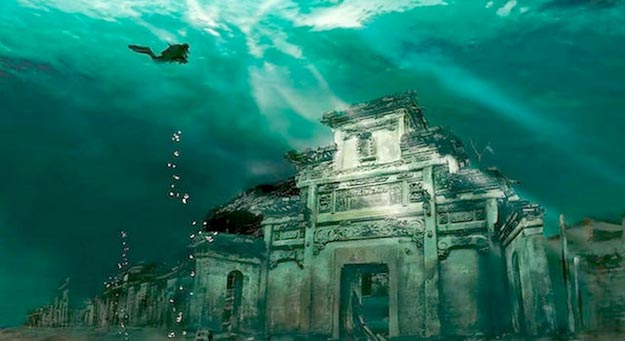 The first underwater exploration attempt of the drowned city was in 2001 when it was discovered there were 265 arches in the preserved ruins. Lion City is about the size of 62 football fields. Read more
The first underwater exploration attempt of the drowned city was in 2001 when it was discovered there were 265 arches in the preserved ruins. Lion City is about the size of 62 football fields. Read more
Are We on the Path to Peak Water?
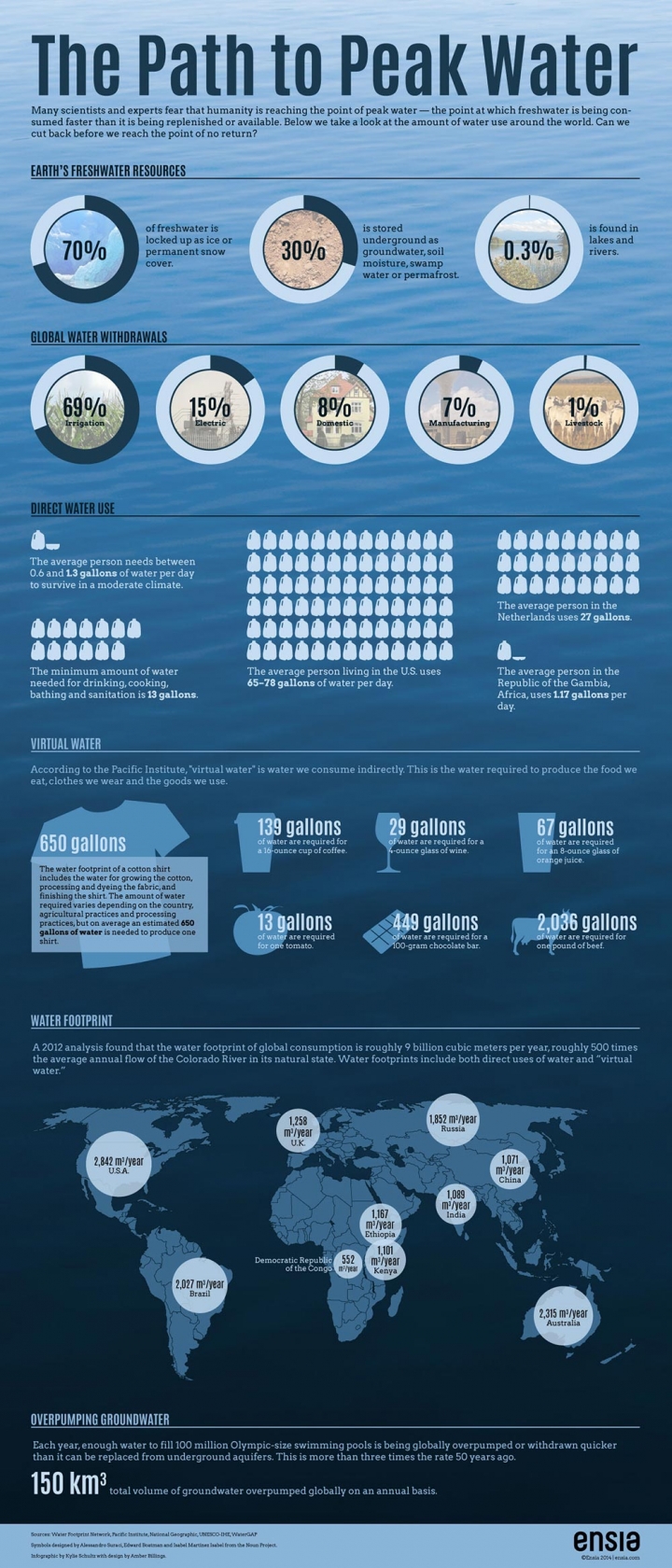 Many scientists and experts fear that humanity is reaching the point of peak water — the point at which freshwater is being consumed faster than it is being replenished or available. In the infographic above we take a look at the amount of water use around the world. Can we cut back before we reach the point of no return? Read more
Many scientists and experts fear that humanity is reaching the point of peak water — the point at which freshwater is being consumed faster than it is being replenished or available. In the infographic above we take a look at the amount of water use around the world. Can we cut back before we reach the point of no return? Read more
Edward Burtynsky’s stunning photos document our complicated relationship with water
Edward Burtynsky has long been one of TreeHugger’s favorite artists. Known for his large-scale photographs documenting the many ways humans have left our mark on the natural landscape in unnatural ways, such as oil consumption, agriculture and mining, the Toronto-based photographer’s latest collection is called Water and shows the role water plays in ecosystems, energy, cultural practices and disasters.
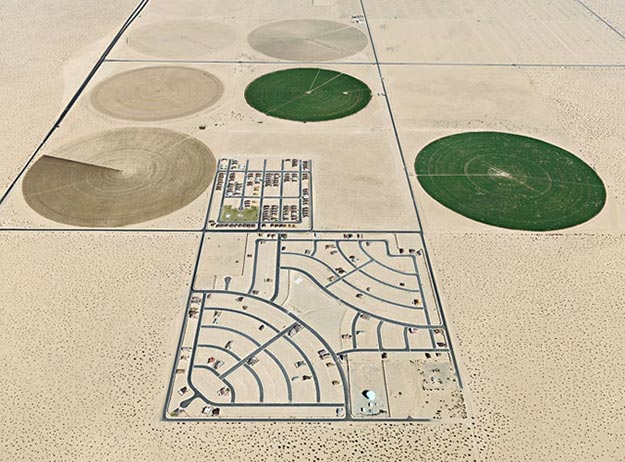 “While trying to accommodate the growing needs of an expanding, and very thirsty civilization, we are reshaping the Earth in colossal ways. In this new and powerful role over the planet, we are also capable of engineering our own demise. We have to learn to think more long-term about the consequences of what we are doing, while we are doing it. My hope is that these pictures will stimulate a process of thinking about something essential to our survival; something we often take for granted—until it’s gone.” Read more
“While trying to accommodate the growing needs of an expanding, and very thirsty civilization, we are reshaping the Earth in colossal ways. In this new and powerful role over the planet, we are also capable of engineering our own demise. We have to learn to think more long-term about the consequences of what we are doing, while we are doing it. My hope is that these pictures will stimulate a process of thinking about something essential to our survival; something we often take for granted—until it’s gone.” Read more

